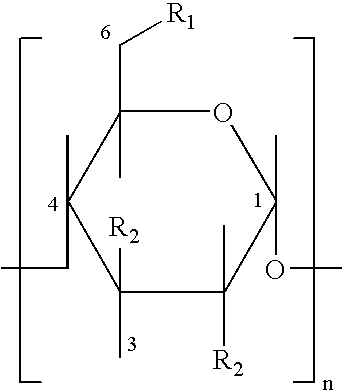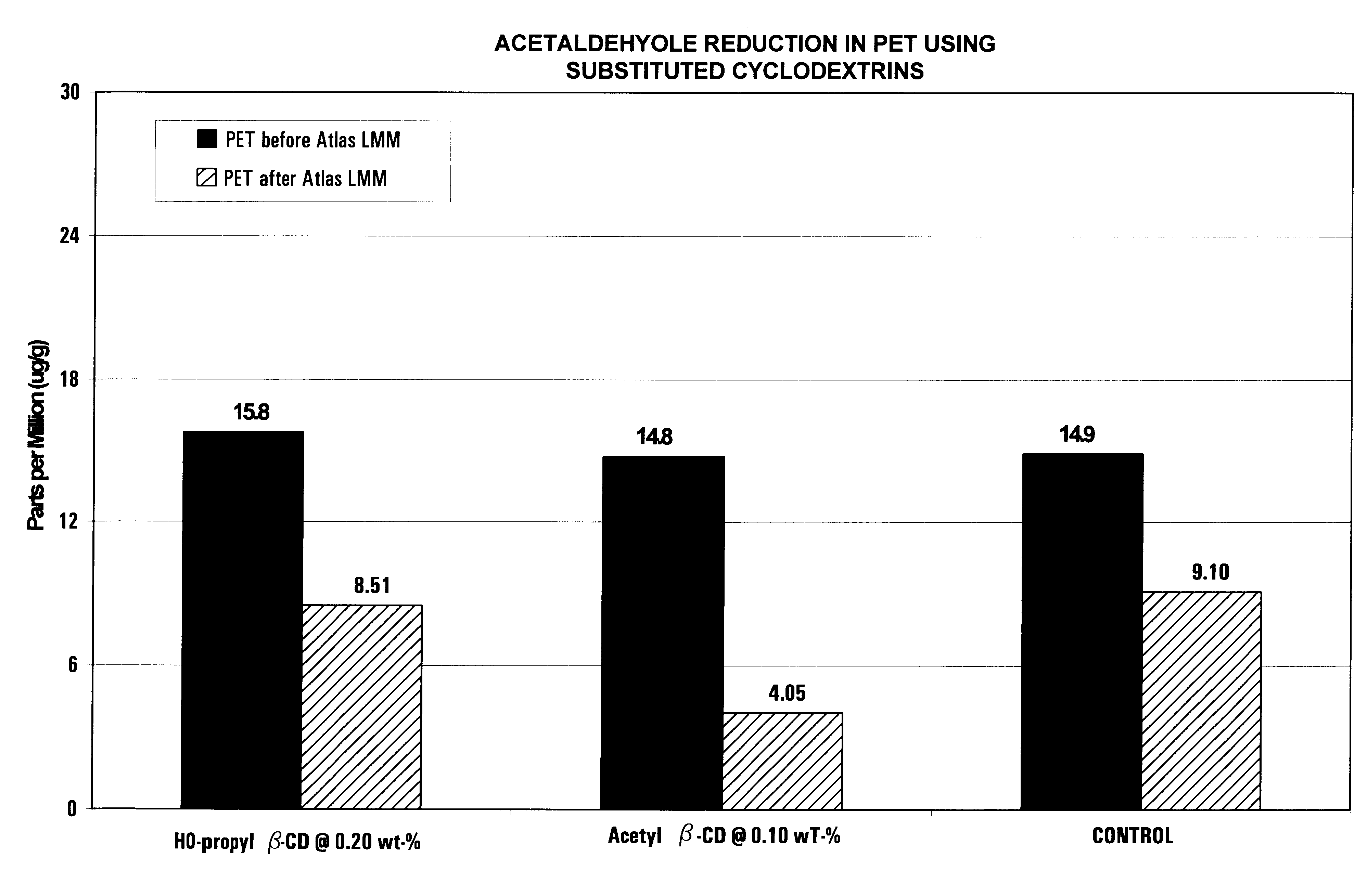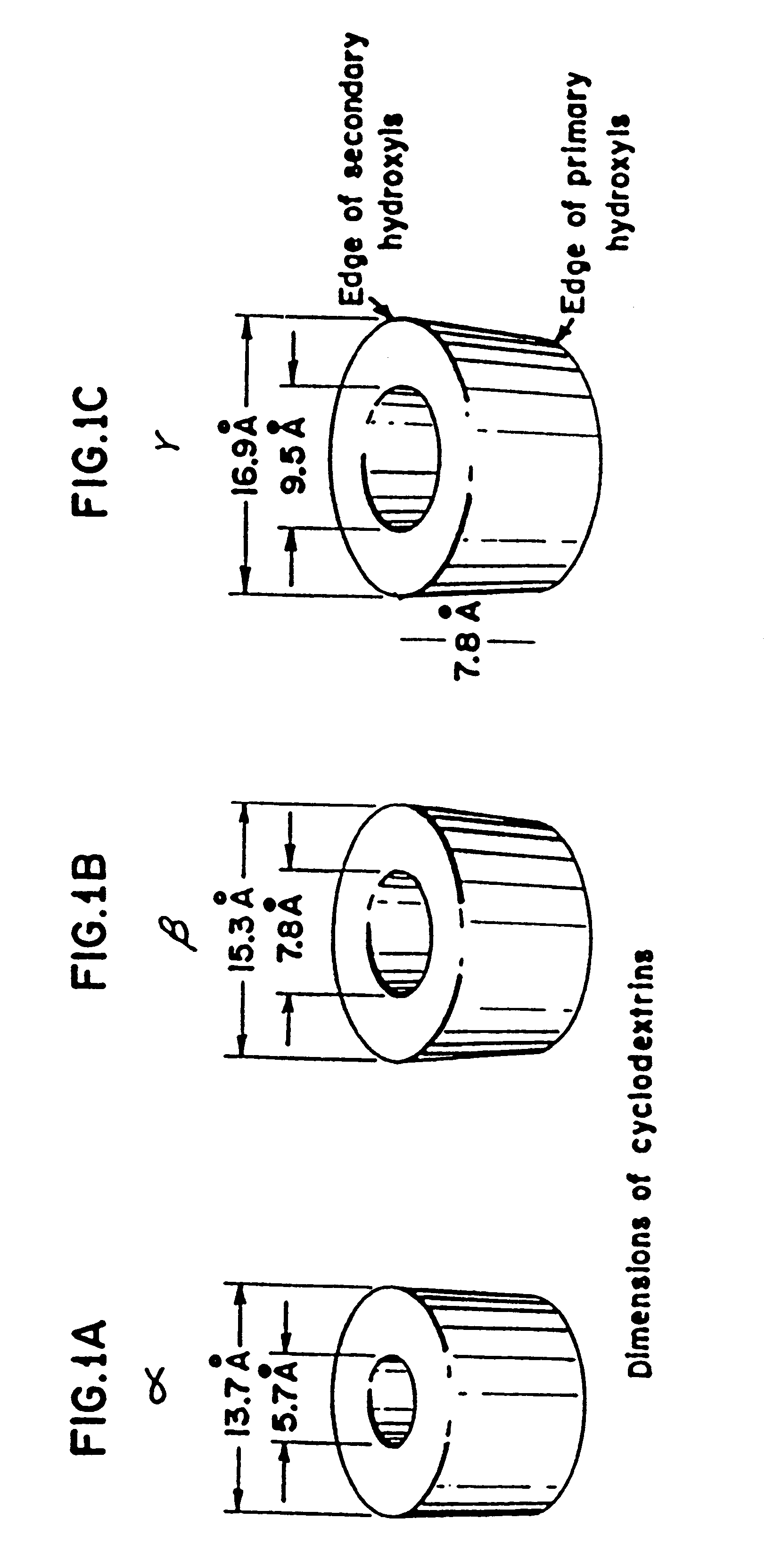Reducing concentration of organic materials with substituted cyclodextrin compound in polyester packaging materials
a technology of organic materials and polyester packaging materials, which is applied in the direction of rigid containers, natural mineral layered products, synthetic resin layered products, etc., can solve the problems of unsatisfactory off-odors or off-flavors in food, byproduct formation, aldehyde formation, etc., and achieve the effect of reducing or eliminating major off-odors and off-flavors
- Summary
- Abstract
- Description
- Claims
- Application Information
AI Technical Summary
Benefits of technology
Problems solved by technology
Method used
Image
Examples
Embodiment Construction
We have found that the packaging properties of polyester materials can be substantially improved using a substituted cyclodextrin material at a concentration that can prevent the formation of an organic material such as an aldehyde, or scavenge the formed organic material. We further found that using a purified cyclodextrin material is preferred for polyester processing. We further found that a preferred degree of substitution, concentration of substituted cyclodextrin and processing conditions produces a high-quality polyester material. We have found that combining a modified cyclodextrin material with the polymer obtains improved reactive organic compound properties and a reduced tendency to release polymer residue (e.g. acetaldehyde).
Suitable polyesters are produced from the reaction of a diacid or diester component comprising at least 60 mole percent terephthalic acid (TA) or C.sub.1 -C.sub.4 dialkyl terephthalate, preferably at least 75 mole percent, and more preferably at leas...
PUM
| Property | Measurement | Unit |
|---|---|---|
| temperature | aaaaa | aaaaa |
| temperature | aaaaa | aaaaa |
| temperature | aaaaa | aaaaa |
Abstract
Description
Claims
Application Information
 Login to View More
Login to View More - R&D
- Intellectual Property
- Life Sciences
- Materials
- Tech Scout
- Unparalleled Data Quality
- Higher Quality Content
- 60% Fewer Hallucinations
Browse by: Latest US Patents, China's latest patents, Technical Efficacy Thesaurus, Application Domain, Technology Topic, Popular Technical Reports.
© 2025 PatSnap. All rights reserved.Legal|Privacy policy|Modern Slavery Act Transparency Statement|Sitemap|About US| Contact US: help@patsnap.com



